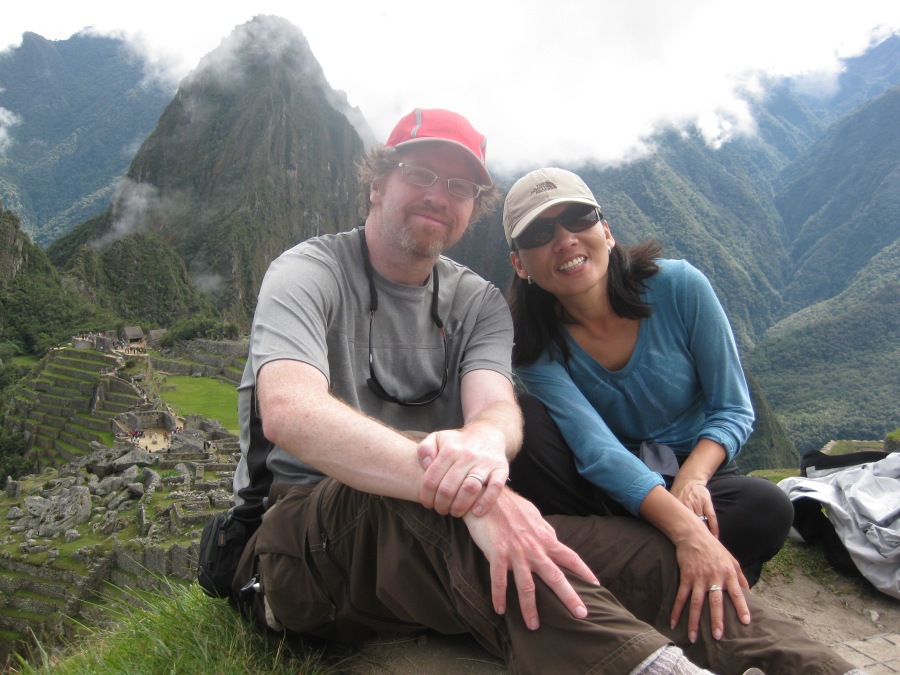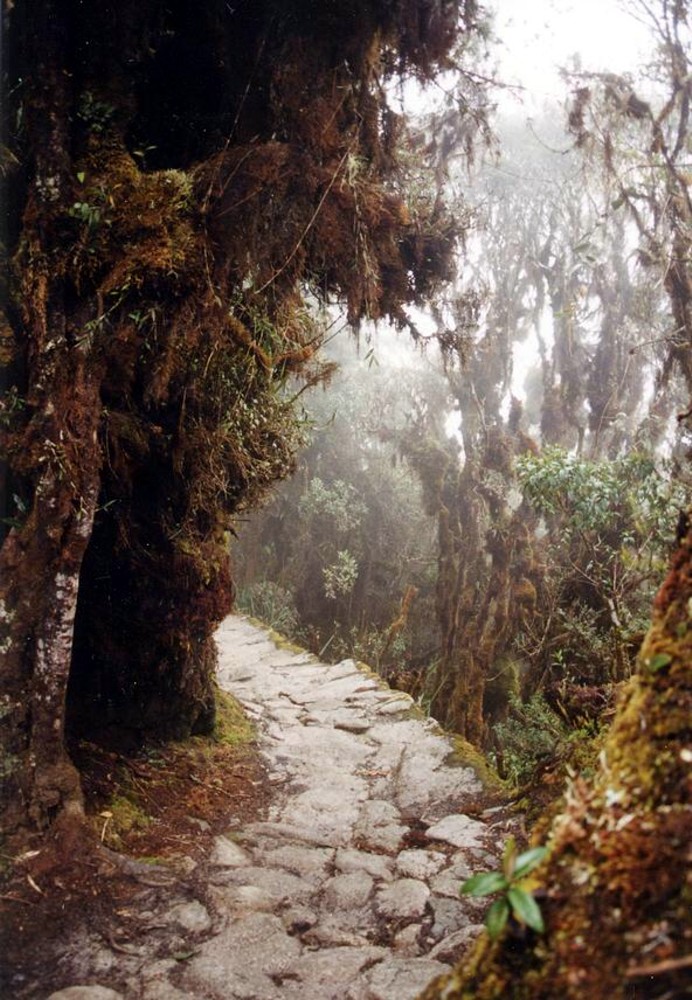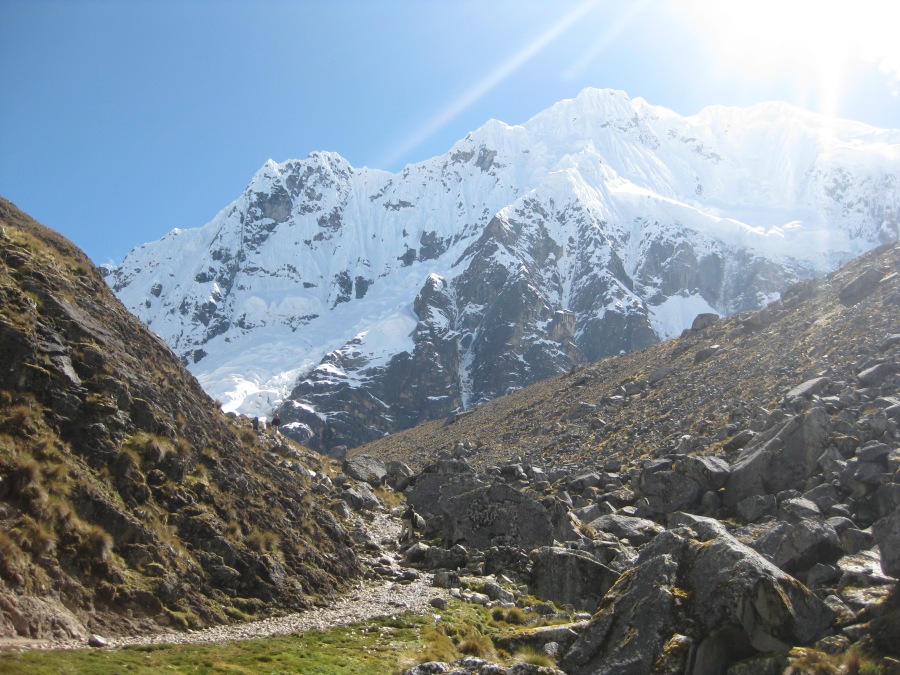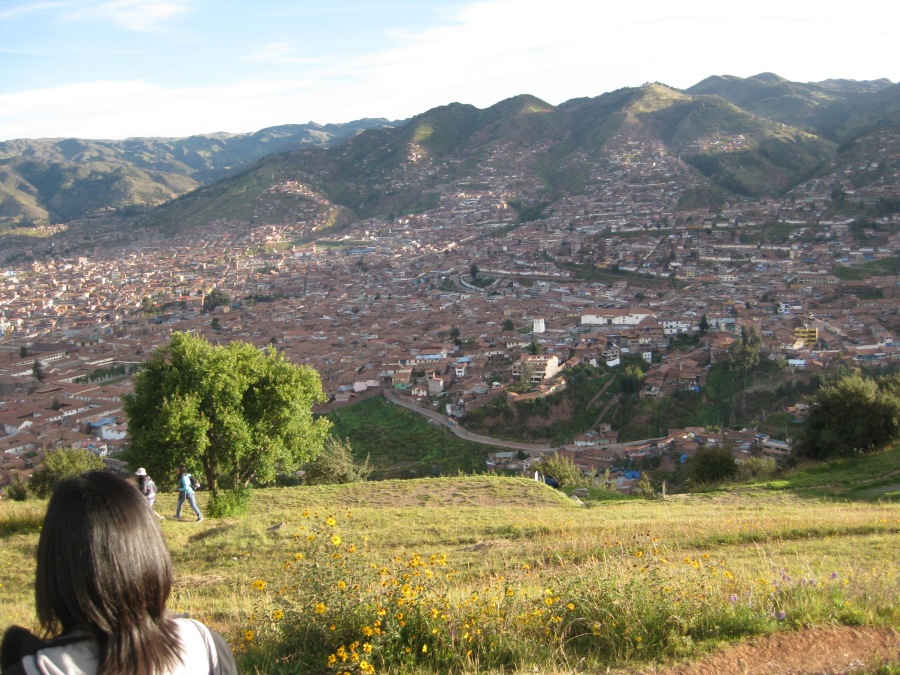***Continuing our mining of past adventures, here’s one I have never blogged about before…the first international adventure of Sylvia and I, together.
(Note all photos by the authors unless otherwise credited.)
*The Salkantay Trek to Machu Picchu is one of Brian and Sylvia’s Bucket List Hikes!
Peru 2012: Machu Picchu via the Salkantay trekking route

Go ahead and look up the world’s greatest hikes and treks. Invariably somewhere near the top of the list (if not at the very top) is going to be the Inca Trail to Machu Picchu. With Sylvia being from Peru and me fanatical about hiking, it was almost a forgone conclusion that we would attempt this trail.
In 2012 we finally got around to it.
If you don’t know what Machu Picchu is…well, you’ve already flunked basic international tourism 101. Machu Picchu is:
- The most intact and spectacularly located of the Incan ruins
- The most significant historical site in the entire Western Hemisphere
- The biggest tourist attraction in Peru
- A UNESCO World Heritage Site
- One of the New Seven Wonders of the World
- One singularly impressive place.
- Is this…

Though remarkable in and of itself, what separates Machu Picchu from any other man-made place on Earth is its setting. Perched precariously on a sloping, jungled mountainside high above the narrow gorge of the Urubamba river, fifty miles from the Incan capital of Cusco, its location is remote even today. Worldwide, only the Pyramids of Giza and the Great Wall of China equal it. But in terms of its remarkable mountain setting, it is probably unsurpassed.
Believed to have been a seasonal estate for the Incan Monarchy rather than an actual city, The Spanish conquistadors never found Machu Picchu, and thus never had the opportunity to plunder it. Its location was lost to the outside world with the fall of the Incas, and the site gradually returned to the jungle…though locals knew of it, and continued to grow corn on its terraces into the 20th century.
In 1911 the American Explorer Hiram Bingham located the ruins and brought word of the “Lost City of the Incas” back to the outside world.
These days, most tourists reach Machu Picchu by fairly conventional means. A train out of Cusco deposits passengers at the foot of the slope, where tourists continue the journey to the monument via shuttle bus. There is no reason why anyone would have to walk a single step to reach the place, except for those required to enter and exit transport.
But some wish to walk to it anyway. We were among them.
The most famous of the walking routes is the so-called Classic Inca Trail. When most people speak of the “Inca Trail”, this is the one they are talking about. The route follows restored portions of the old Incan route connecting Cusco with several important sites, including Machu Picchu, at times on the original stones of the Incan road. It is the most historically interesting route, and by far the most popular.

But it is not the only route, nor is it necessarily the best.
There are two issues with the Classic Trail, the first being its own popularity. The route is very crowded due to its fame; and because of the fragile nature of the historical artifacts along the way, access to it is very tightly controlled. Booking for the trip must be made well in advance and is never a sure thing; for example, according the Wikitravel, bookings for the entire month of May 2017 (the beginning of the peak season) sold out the day they were made available.
In addition to the crowds, the classic route (while scenic) is not the MOST scenic route to Macchu Picchu. The old Incan highway after all was built to run an empire, not with scenic tourism in mind. Several other routes exist that traverse higher mountain passes and are considered scenically superior, as well as less crowded and more challenging. Among these is the Lares route, the Choquequirao Route (considered the toughest) and the one we would eventually choose…Salkantay. The Salkantay route was actually suggested to us by our tour provider and, after researching it, we decided that this was a sound suggestion, better than the classic route. This would be our route to Machu Picchu.
Wikitravel describes the Salkantay Trekking route as follows:
The Salkantay Trek is a trek in Peru and an alternative to the traditional Inca Trail for reaching Machu Picchu. The trek crosses the Salkantay Pass at 4600m, descends into the cloud forest and passes the Inca ruins Llactapata, with a view of Machu Picchu.

The route we took is roughly the one described in his map, provided by the tourist provider https://salkantay.org. (note we did NOT use this provider.)
https://salkantay.org/salcantay/salkantay-trek-map.html

Because of time limitations, we were unable to do the full trek, which takes 5 days. We chose instead the four-day option, which bypasses Llactapata. However, even that itinerary would prove (as were to find out) extremely ambitious.
Almost all of the arrangements were made by the tour company. They provided guides, tents, and cooked all meals, which greatly aided in making the trek easier. However, it is entirely possible to do this trek independently and many do so. But most chose to sign on with a guided expedition as we did. Since it is relatively inexpensive to do so, we would recommend this to all but the most experienced and self-sufficient trekkers.
Regardless of what itinerary you chose, your experience will begin at the gateway city of Cusco. The ancient capital of the Incas is located at an elevation of 11,152 feet…more than twice as high as Denver, Colorado. You will want to spend a few days acclimating here, getting used to the altitude. And that’s fine because there is plenty to see here, which is one reason why this remote Andean city sees more than 2 million tourists a year.

Next Post: Pre-Hike, Cusco and the Sacred Valley